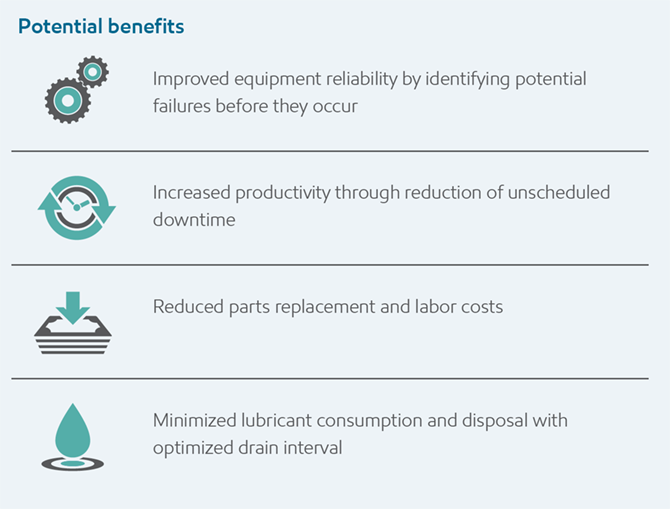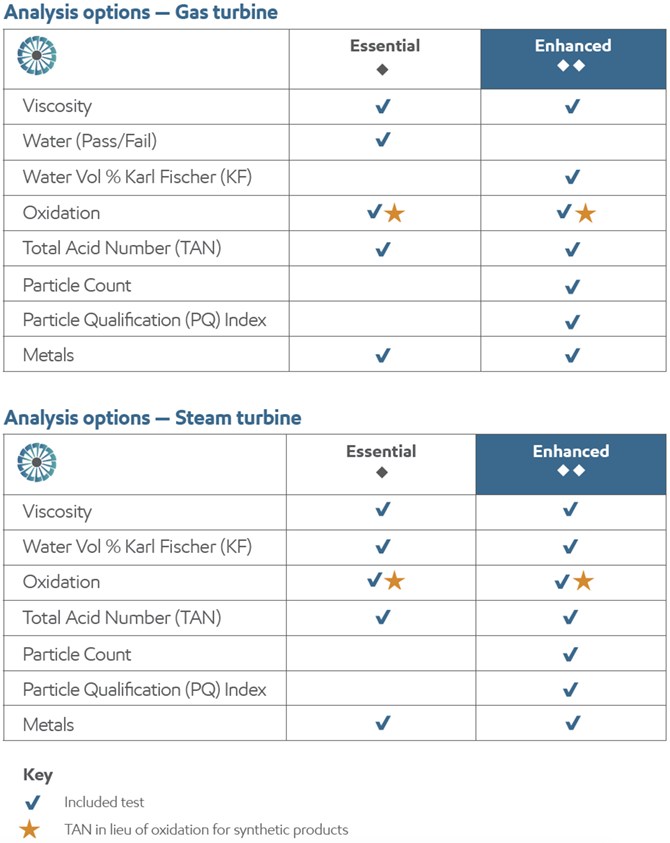Gas and steam turbine analysis

This service monitors turbine and lubricant conditions to detect premature wear and contamination.
Description
This service is designed to help you detect premature wear and lubricant contamination before they result in costly downtime or expensive repairs. Turbine analysis is applicable for gas and steam turbines operating in continuous or intermittent service. It includes testing to help improve turbine reliability by monitoring system cleanliness and lubricant performance.


| Test | Purpose | Importance of test |
|---|---|---|
| Metals | To determine the presence and levels of metallic content in the oil, including contaminants and wear particles | The level of wear metals helps determine if equipment components are wearing or if harmful contamination is entering the oil (i.e., paper machine cleaning chemicals). The level of metals that are part of additive chemistry are also reported |
| Oxidation | To determine the level of lubricant oxidation and deterioration |
Oxidation can mean:
|
| Particle Count Analysis | To measure the level of particulate contaminants in the oil |
|
| Particle Qualification (PQ) Index | To determine ferrous metal fatigue failures and metal-to-metal contact not usually detectable with current spectrographic analysis |
PQ Index can detect at an early stage:
|
| Total Acid Number (TAN) | To measure acidic oil oxidation by-products | An elevated Total Acid Number may indicate increased oil acidity resulting from increased oil oxidation. |
| Viscosity | To determine the oil’s resistance to flow |
|
| Water | To detect presence of water contamination | Water contamination may cause severe corrosion and subsequent wear, poor oil film thickness or hydrogen embrittlement |
